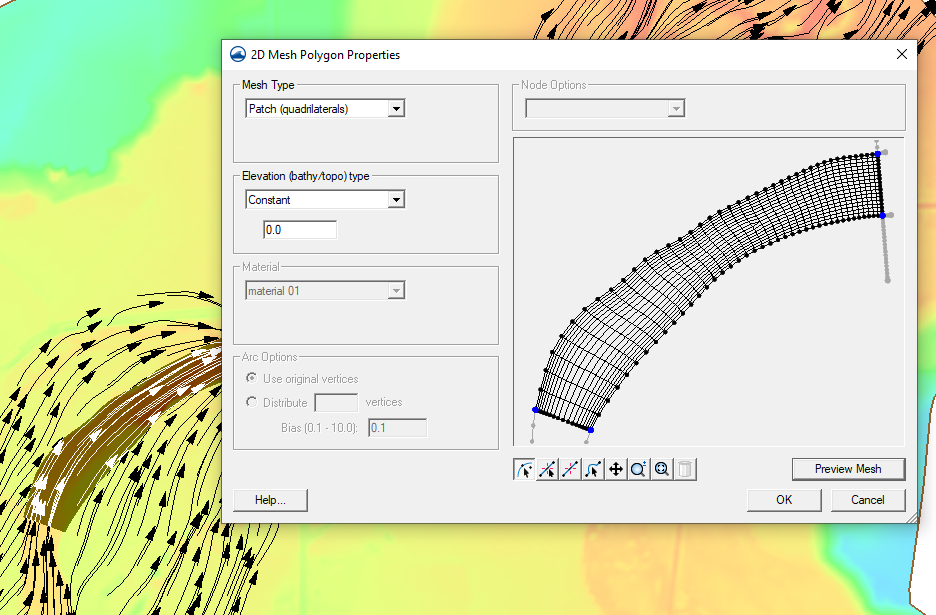We use cookies to make your experience better. To comply with the new e-Privacy directive, we need to ask for your consent to set the cookies. Learn more.
2D Mesh Editing Versus Regeneration: Which is More Apt?
If you need to make a change to a mesh, should you use the toold in the 2D Mesh module to edit, or instead regenerate the mesh? A 2D mesh consists of elements that define the computational domain of the numerical model. A numerical simulation requires a geometric definition of its domain– the mesh, available for use in SMS 13.3. Occasionally when constructing a mesh, a moment occurs where the mesh is insufficient for any reason.
In most cases the recommendation is to regenerate the mesh; as opposed to editing the mesh manually. The following list involves common circumstances where one may manually edit a mesh:
- There is no mesh generator coverage present.
- Deleting Outer Elements: Since the triangulation process creates elements (i.e. thin triangles) outside the mesh boundaries, deleting outer elements provides some refinement.
- Merging Triangles/Element: Numeric solvers are more stable and accurate when quadrilateral elements are rectangular and triangular elements are equilateral.
- Editing Individual Elements: After compound edits, a mesh could benefit from individual manipulation to increase stability. Swapping edges: Think of the two triangles as a quadrilateral, and the common edge between them is a diagonal of the quadrilateral. By swapping this common edge, it changes to be along the opposite diagonal of the quadrilateral. If this edge is clicked again, it returns back to its original state.
- Turning a specific element into a void element.
You may make edits in the Mesh Generator coverage. Manual edits should be intentional and reserved for small sections of a mesh. Generally, manual edits of a mesh ought to be minimal.
In nearly all cases the recommendation is to regenerate the mesh; as opposed to editing the mesh manually. This is because any process that edits a mesh, causes the node and element ordering to become disorganized. Additionally, editing a mesh invalidates any solution files that have been previously saved. Manually editing a 2D mesh risks creating issues with the assigned elevation data or other datasets being used. As such, if there is a solution dataset attached to the mesh, the model simulation should be re-run.

A useful tip is reviewing your mesh before generating, using the preview tools that are available in a given dialog. Make adjustments to the arcs, vertices, and polygons on the mesh. Do not be afraid to add more arcs, vertices, or polygons if further refinement is needed.
If you want to generate a new mesh with the desired edits, you will need to create a mesh generator coverage. The following are examples of tools that can create a new mesh:
- Map → 2D Mesh tool.
- 2D Mesh from 2D Grid in the toolbox.
- Additionally, most of the Unstructured Grid tools may be utilized to generate a new mesh.
Make use of the mesh editing and generating capabilities of SMS 13.3 today!


